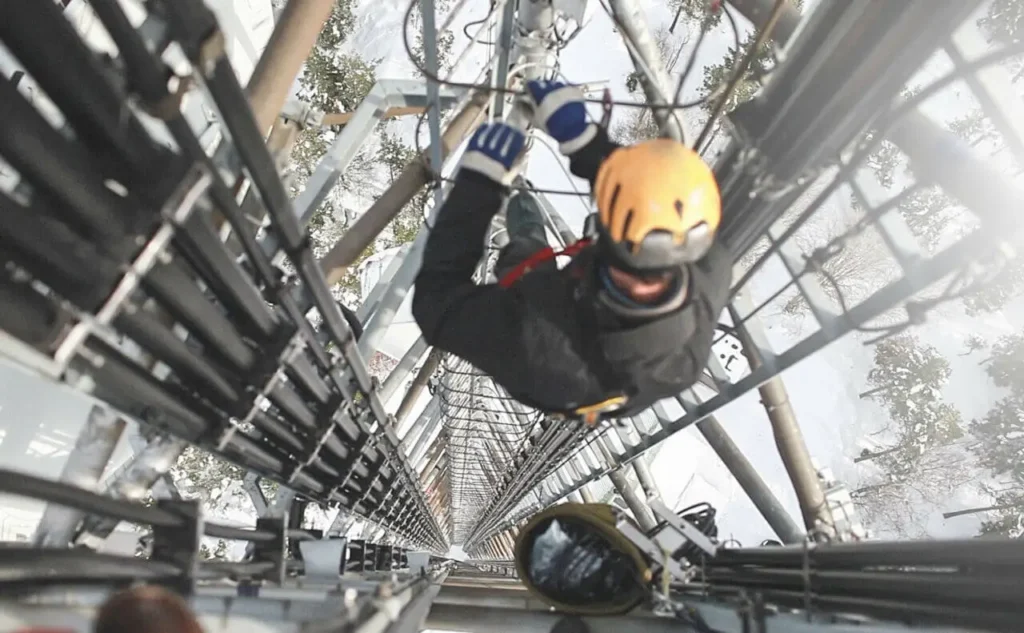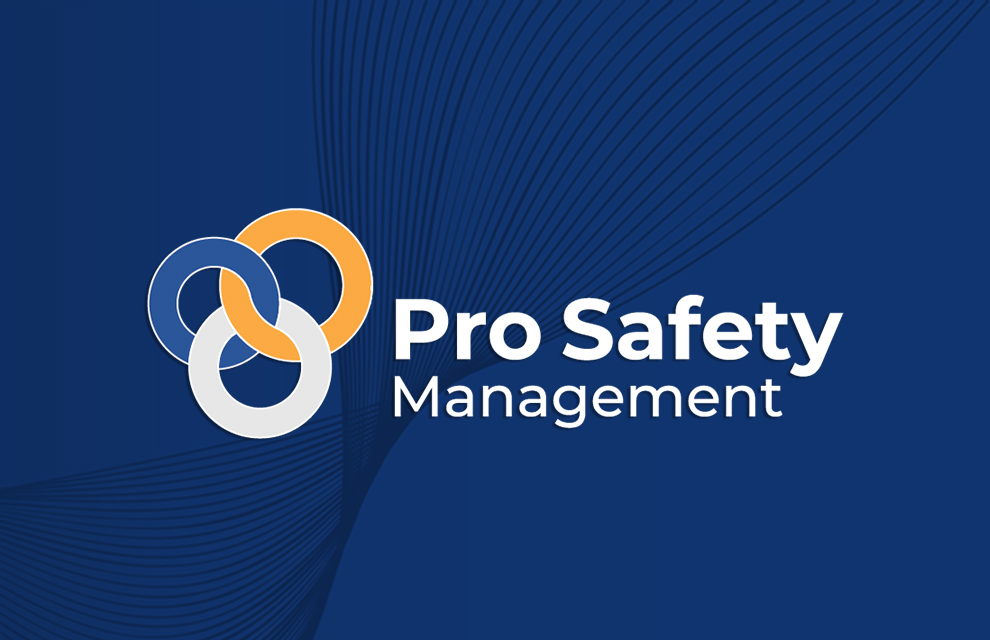
I hope you enjoy reading this blog post.
If you want my team to just do your health and safety for you, click here.
10 Biggest Health and Safety Hazards in the Telecoms Industry

The telecommunications industry is a vital part of our daily lives, but it comes with its own set of unique health and safety risks.
From working at great heights to exposure to electromagnetic fields, these hazards pose a real threat to the health and well-being of telecoms workers.
Whether you are a telecoms worker or an employer, it is important to be aware of these hazards and take the necessary steps to protect yourself and your employees.
In this post, we will cover the 10 biggest health and safety hazards in the telecommunications industry, including:
We will explore each of these hazards in detail, providing information on the risks they pose, and the steps that can be taken to mitigate them. By the end of this post, you will have a better understanding of the health and safety risks in the telecommunications industry and the measures that can be taken to protect yourself and your employees.
So, let’s dive in and explore the 7 biggest health and safety hazards in the telecommunications industry.
Working at Height
When it comes to telecommunications work, it’s often necessary to perform tasks at height, such as installing cabling, antennas, and other transmission equipment. This can increase the risk for linemen and engineers, who may spend a significant amount of time working on telecoms masts, towers, and rooftops.
The biggest risk when working at height is falling, which can lead to serious injuries or even death. To mitigate this risk, it’s important to ensure that team members have proper training and refresher training, and that they are using the appropriate safety equipment, such as Personal Fall Protection Equipment (PFPE). It’s also crucial to have a well-planned approach, including identifying suitable methods of access, having the right number of team members on site, having rescue plans in place, and conducting relevant medical checks. In addition, it’s important to take into account weather conditions that could affect safety, such as high winds or lightning.
Another risk of working at height is the potential for items to fall from above and strike those below or damage property. To reduce this risk, it’s important to only take what is needed up to height, use tool lanyards and equipment tethers when practical, and create an exclusion or drop zone below the working area. This may also involve implementing appropriate traffic management for the public.
Traffic and Driving
Traffic is a major concern in the telecommunications industry, as many tasks are performed in the public space. This can put the workforce and third parties in danger of being struck by a vehicle. To minimize this risk, it’s important to have proper planning, training, and competence in place.
To ensure suitable planning, it’s important to understand the task and environment before works commence. This includes reviewing the proposed work site to understand how it will impact the road and traffic, managing the works to minimize impact, and considering the position, size, and timing of the site set up. If the impact cannot be eliminated, traffic management plans should be developed and approved in advance.
To ensure suitable training and competence, it’s important that the right individuals are involved in every step of the planning and delivery of the works. This includes reviewing the site, designing the traffic management plan, and setting up the traffic management. It’s also important for the site team to have the training and competence to ensure that the risks are controlled and to make adjustments as necessary.
Traffic accidents while traveling to and from job sites in the telecommunications industry can also pose a significant risk to workers. Due to the nature of the job, telecoms workers often have to travel long distances to remote locations, and may work in areas with poor road conditions or heavy traffic. This can increase the likelihood of being involved in a vehicle accident. Additionally, the workers may have to travel to different locations in rush hour or at night which also increases the risk of accidents.
To mitigate this risk, companies in the telecommunications industry should implement policies and procedures for safe driving, providing them with safe and well-maintained vehicles, and where required additional driving training (i.e. advanced/defensive driving techniques). Regularly scheduled maintenance and inspections of the vehicles used by the workers can also help to ensure that they are in good working condition and less likely to break down on the road.
Working Long Hours
As a telecommunications manager and engineer, the workload can vary greatly from day to day. Engineers may find themselves working long hours on site, installing new equipment or decommissioning towers. The nature of the job can range from routine tasks to complex and time-consuming projects.
Telecoms delivery managers are often under pressure to meet rollout targets and may need to oversee work outside of normal working hours. This may include working late into the night and at times, requiring long drives home.
Working long hours can have negative effects on both the team and third parties. It can also impact the quality of work if not managed properly. Lack of sleep can lead to decreased attention and impaired decision-making, leading to unnecessary risks. In the long-term, chronic lack of sleep can have serious effects on physical and mental health, lower morale, and lead to staff turnover.
To mitigate the risks associated with working long hours, it’s important to have a plan in place. This includes:
- Planning work in a way that doesn't consistently exceed normal working hours
- Having a fatigue management process in place to address working over normal hours. This may include using a fatigue risk assessment to identify additional controls, such as arranging for hotel stays or transportation, taking additional breaks, increasing the number of staff on a task, or postponing work until the next morning
- Considering factors beyond excessive hours that can impact fatigue, such as weather conditions, the nature of the work, and personal and social factors
- Taking regular breaks when driving, such as a 15-minute break every 2 hours of driving
For more information on this topic, consider reading “Why We Sleep” by Matthew Walker.
Working With Electricity
Working with electricity in the telecoms industry requires a high level of knowledge and familiarity, as well as a focus on safety. Electrical accidents, such as shocks and electrocutions, can be serious but can also be prevented with proper training, support, and planning.
To ensure safety, it is crucial to provide your team with relevant training in electricity and emergency procedures, as well as arranging additional support as needed. Before beginning any electrical work, a thorough risk assessment should be conducted to identify potential hazards and the necessary controls to eliminate or reduce those risks.
When working near live power, it is important to ensure that the asset can be isolated or that other controls are in place, and that only individuals with suitable training and competence are selected. Using safe tools is also crucial, as well as being aware of overhead power lines and keeping the workforce outside of the approach distance unless permission has been given by the asset owner. Additionally, special precautions should be taken in wet and humid weather, as it can increase the risk of electrical incidents. Restrictors or physical barriers can also be used to reduce the risk of contact with electrical items or power lines.
Working In Extreme Weather
Telecoms workers are often exposed to harsh weather conditions while on the job, which can pose significant risks to their health and safety. From extreme heat to cold temperatures, wind, rain, and snow, these elements can take a toll on the body and increase the likelihood of accidents or injuries. To mitigate these risks, it’s important to implement safety measures that protect workers from the elements.
Some basic controls that can be implemented include:
- Reviewing and updating personal protective equipment (PPE) to ensure it is appropriate for the working environment, such as insulated gloves, boots with good traction, and waterproof clothing
- Ensuring that workers have the means to dry their PPE and clothing between shifts, especially if they are staying away from home
- Providing additional breaks in extreme heat or cold to allow for rest and recovery
- Making sure that all workers have access to sufficient drinking fluids in extreme heat
- Raising awareness about the need to stop specific tasks in certain types of weather, such as working at height or climbing towers during high winds or electrical storms
Equipment Failure and Structure Collapse
Equipment failure and structure collapse in telecoms towers, masts, and their platforms can pose a significant risk to those working on or near the asset. To mitigate this risk, it’s crucial to implement regular inspections, identify any unsuitable assets, and raise awareness among those who access these items.
To ensure safety, asset owners should establish a clear inspection schedule and identify the specific areas that need to be checked. The person conducting the inspection should be competent and qualified to do so.
If an asset is deemed unsuitable for access, it should be clearly marked as such, so that anyone approaching it can identify the warning and take appropriate action. All those who access these items should be aware of where to find information about the structure and how to raise concerns if they identify any issues.
In cases where an asset is deemed unsafe, only a qualified and competent person should assess, make alterations, and confirm that it is now safe to access.
Electromagnetic Waves
Telecom engineers and linemen who work with transmission antennae are at risk of exposure to electromagnetic waves, which can have both thermal and non-thermal effects.
Thermal effects include heating of tissues, blindness and sterility (mainly associated with broadcast antennae), and burns and electrical shocks.
Non-thermal effects include alteration of the body’s circadian rhythms, immune system, and the nature of the electrical and chemical signals communicated through the cell membrane and interference with medical devices. Symptoms of exposure to high levels of non-ionizing radiation include labored breathing, sweating, headaches, numbness, a tingling sensation, and overall feelings of unwellness. To minimize exposure, it’s important to conduct proper risk assessments and take precautions when working near RF sources.
For more guidance, consider reading:
MATS Guidance Notes: Radio–Frequency Safety for Non–Telecommunications Workers
Underground and Overhead Services
There are a number of utility services that have the potential to course harm if damaged (electricity, gas, high pressure services – water / gas), and others that may cause disruption to business, public services and the public (fibre, water). Even if no one is harmed the reputational damage to the business, team and individuals can be great.
Good planning by network designers, suitable briefing by contractors, and relevant training throughout the project team will reduce the potential risk of damaging services and injury to individuals. This should include:
-
Defining a framework around the detection, verification, and location of services. Adopt recognised national standards such as:
PAS128 (Specification for underground utility detection, verification and location)
HSG47 (Avoiding danger from underground services) - The identification of the services in the vicinity and who owns them
-
Identification which services need to be isolated during the works.
Remember: The asset owners’ requirements maybe more stringent than those set out by the HSE and may take time to arrange isolation etc. - How the services are to be located on site i.e. the use of cable location devices prior to physical works commences
-
Risk assessment that identifies the most suitable method of work and controls for the hazards – i.e. type of excavator bucket to be used, physically marking out the route of services on the ground or goal posts for overhead cables, use of insulated tools etc.
Remember: do not just focus on the services where the physical works are occurring i.e. excavators can contact overhead services and cranes can damage underground services from the stabilisers point loading - An established plan of action as what all should/should not do if services are struck (even if believed not damaged buy the site team)
- Relevant permit systems such as permits to dig, or plans such as lifting plans to be utilised
Street Work Sites
Although traffic management was discussed in hazard #2 Traffic and Driving there are other hazards associated with working in the public space that should be considered.
These include but are not limited to:
- Foot fall - does it have specific time when it is busy i.e. if near a school
- Space - to ensure the public have suitable space for safe access following needed site set up
- Potential unsocial members of the public - aggressive, trying to steal from site/vans or trying to enter the site
- Protestors – planned or suspected demonstrations for non-telecom relevant activities
- Protestors - to the telecom works, or perceived telecom works
- Risk from sharps – needles sticks
The understanding of the risk of these and other hazards should where possible be identified during the planning stage. If they are identified during the physical works and deemed to be unsafe by the workforce, a suitable process should be in place for the workforce to stop, make safe and raise the issue with a manager so that they are able to establish the most suitable controls going forward.
We’ve covered some ways that telecom site supervisors can help maintain health and safety standards onsite:
Telecoms Supervisor: 5 Key Actions to Maintain Highway Working Health and Safety Standards
Respirable Crystalline Silica (RCS)
Most telecoms engineers or street work teams will be required, regularly or occasionally, to break through substances such as concrete, mortar or sandstone to reach their required depth/location. The method used, be that cutting, breaking or drilling, has the potential to create dust and expose the team and anyone within the vicinity, such as the public walking past to the risk of Respirable crystalline silica (RCS).
Silica can be found in most types of rock, sand and clay as well as concrete and bricks. Some of this dust is fine enough to be breathed into the lungs. This dust is called respirable crystalline silica (RCS) and is able to cause a Silicosis, Chronic obstructive pulmonary disease (COPD) and lung cancer, by those who breathe it in. The risk is even higher for those who smoke.
The individuals managing these works need to assess the risk of exposure of these activities to their workforce and others who may be exposed:
- Can they eliminate the task that creates the dust – gain access via a different route?
-
Use control measures that reduce the exposure below the Workplace Exposure Limit (WEL) of 0.1mg/m3 (averaged over 8 hours). https://www.hse.gov.uk/pubns/books/eh40.htm
This may be achieved by the use of tool vacuum attachments or/and dampening down – this is also included for any cleaning (sweeping) activities.
Note: you may need to demonstrate to yourself, the workforce and the regulators/legal teams that your control measures are reducing the exposure to below the WEL. -
Use of RPE where there is still a risk of exceeding the WEL. The use of RPE should include face fit tests and training in its use for all users.
Remember: if you are not clean shaven the RPE will not work as effectively – you could look at other options such as positive pressure RPE. - Identify if health surveillance is required, and where it is required implement with the relevant individuals. This will depend upon level, frequency and duration of exposure.
For more information: https://www.hse.gov.uk/stonemasonry/silica-dust.htm
What Next?
Now you have an outline of the main hazards for telecommunications workers. But what can you do about them? Fortunately, there are things you can do to minimize these risks.
To put this into practice with your own sites, you can follow these steps:
- Review the hazards present at your sites, taking into account any additional hazards specific to the tasks or environment
- Identify the most suitable controls for the identified hazards, and implement them
- Continuously review how well the controls are working, by gathering feedback from the workforce and evaluating their effectiveness
- Encourage open and honest communication with the workforce to understand why certain controls may not be working or being used, and use this feedback to improve safety measures
- Empower the workforce to feel confident in stopping work if they feel it is unsafe, and provide them with support and guidance on how to do so
cdm telecoms e-learning course
NEW: Construction Design Management Regulations for Telecoms E-Learning Course
Do you want better compliance?
Hey, I’m Alex Burbidge. I’m determined to make a business health and safety compliant. My only question is, will it be yours?

About Pro Safety Management
We are a Specialist Telecoms Health and Safety Consultancy with over 40+ years experience. Serving some of the global leading telecommunication companies, we provide specialist and strategic health and safety management ensuring operational standards at the highest level.
Do you want better compliance?
Hey, I’m Alex Burbidge. I’m determined to make a business health and safety compliant. My only question is, will it be yours?


